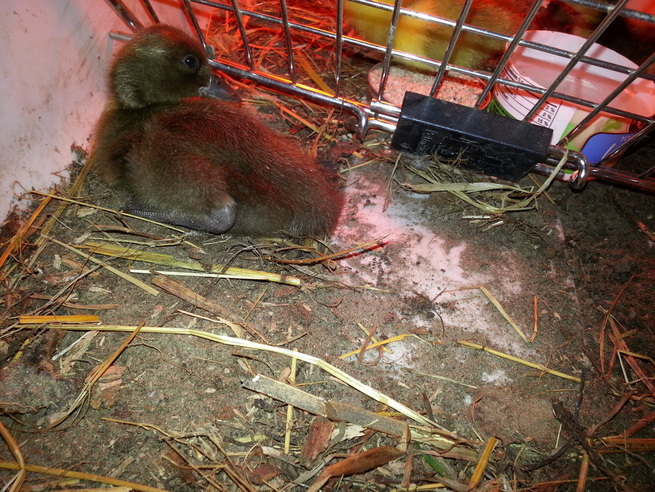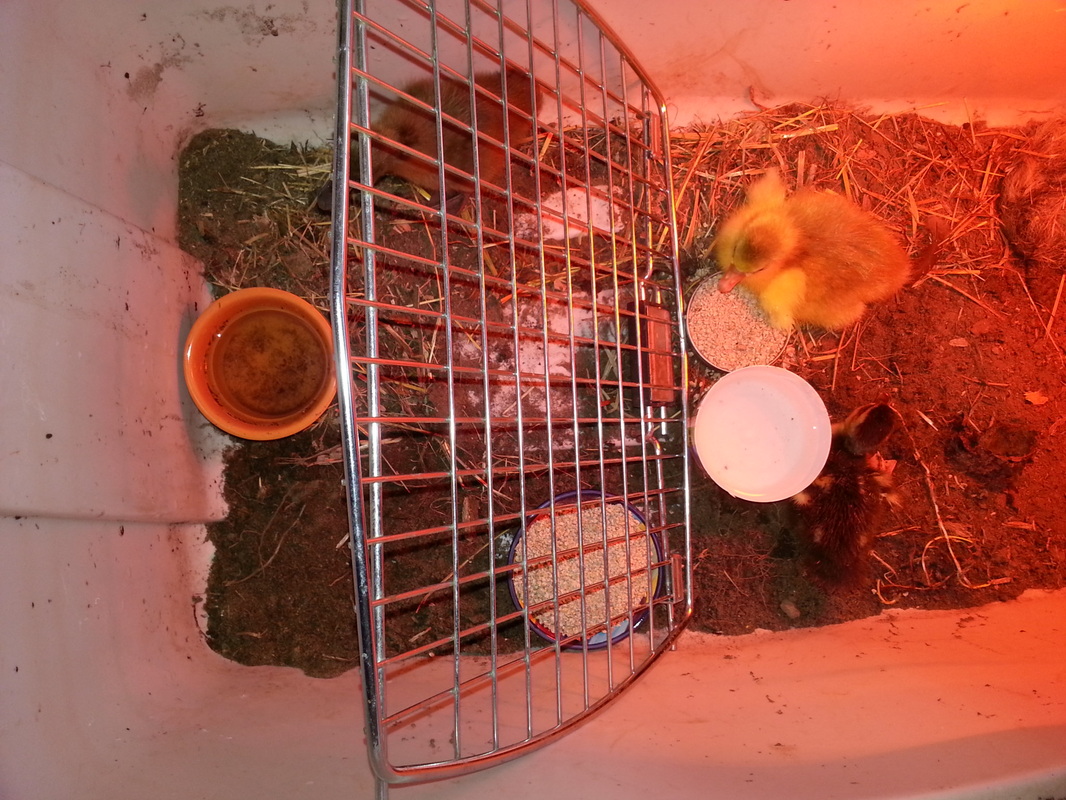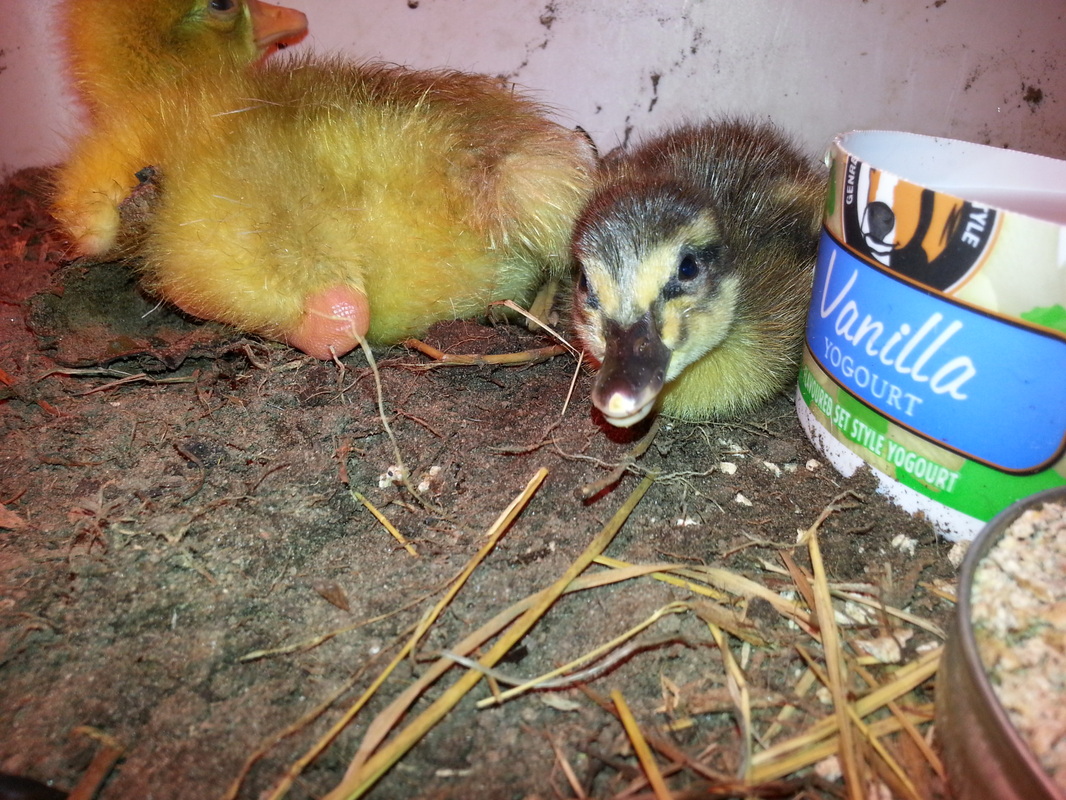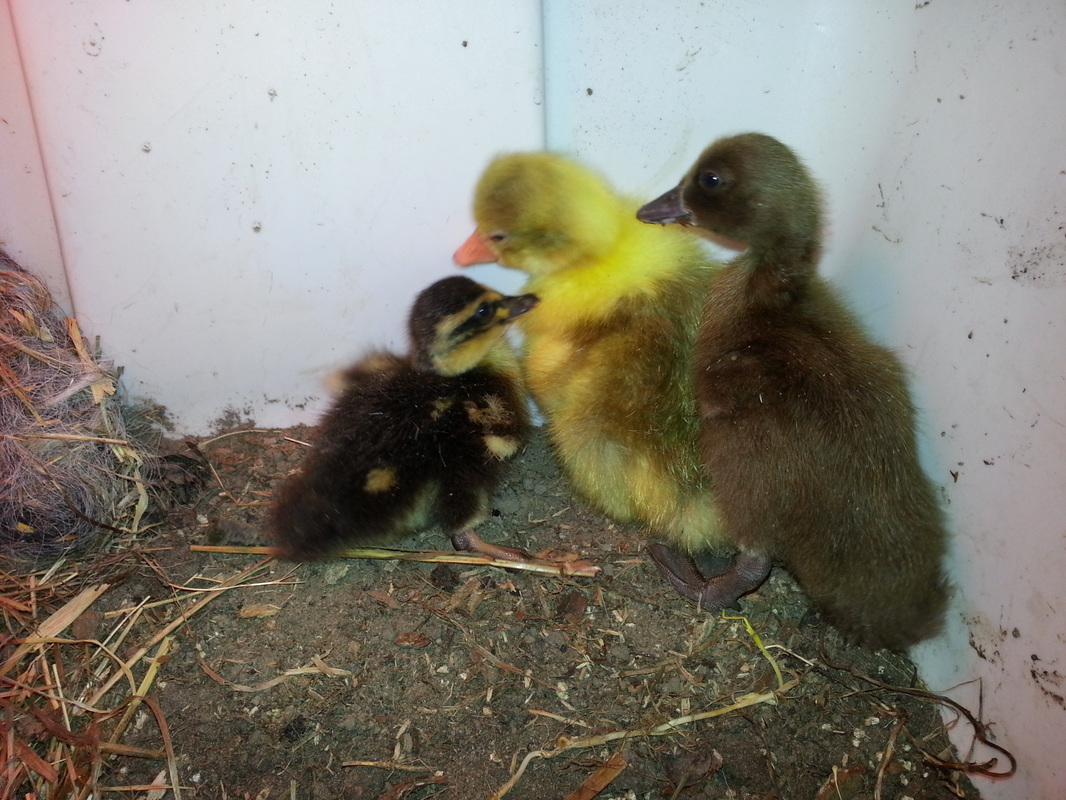 The few days old Khaki Campbell duckling is separated from the newly hatched babies to protect them.
The few days old Khaki Campbell duckling is separated from the newly hatched babies to protect them. I listened carefully and sure enough, there were babies waiting, so I plugged the machine back in. One of the ducklings was very quiet, so I helped him open his shell. I think that might have been a mistake. They need the pecking and resting to absorb the last of the yolk. There was some blood in his shell and I am thinking yesterday when the two hatchlings were still in the incubator, they could have banged the eggs around and caused harm. He is not doing so well, but is still alive.
I have learned a great deal about hatching. This was my first attempt. I have a very old incubator that does not measure humidity or temperature. There is a pan of water inside, however; the holes should have been taped over for the first while, until hatching starts. This raises the carbon dioxide levels and keeps the humidity inside, more like the conditions under the duck. Turning the eggs and wetting them down with a sprinkle of heavy misting is necessary too. I did keep a thermometer inside and the old incubator was excellent at maintaining the temperature, but I should have had it 100, not 98. They take two days longer to hatch when the temperature is 2 degrees cooler, or so the book says.
When I first put the new hatchlings in with the few days old duckling, he tried to run at them and bite them. To protect them, I put a divider in the container, where they could communicate and get used to one another. After an hour, the divider was removed and they are snuggled together. The older duckling taught the babies to eat and drink. It was so cute. I cannot say that hatching is fun, but it is rewarding and heartbreaking at the same time. Some of the babies were fully developed and died in the shell. This can happen when the embryo is just not viable, or when the conditions are not quite right. I suspect better humidity control will prevent most problems, so after these babies hatch, I will set another load of eggs. Having learned 'how' now, I am sure to have better results with the second try. And they are adorable and quirky and so much fun to watch.
The babies are on dirt from outside. When I set it up for them, there were a few ants crawling in the dirt, a spider, some straw and I picked some green grass tips, so it is more like nature than shavings. I have started them with duck and goose starter, commercial feed, against my better judgement, since it contains mostly genetically modified grains and chemical additives. I will offer them soaked chopped grains in a few days. They have already been eating their dirt to some extent and I will continue to pick grass for them. Last year, a Khaki Campbell raised 8 babies and from the day they were hatched, she had them outside foraging. Surprisingly, they are extremely hardy compared to chicks and could be out without warming for a long period of time. I do enjoy waterfowl very much and have just purchased a pair of Blue Swedish ducks. Soon it will be The Fat Duck Farm!




 RSS Feed
RSS Feed